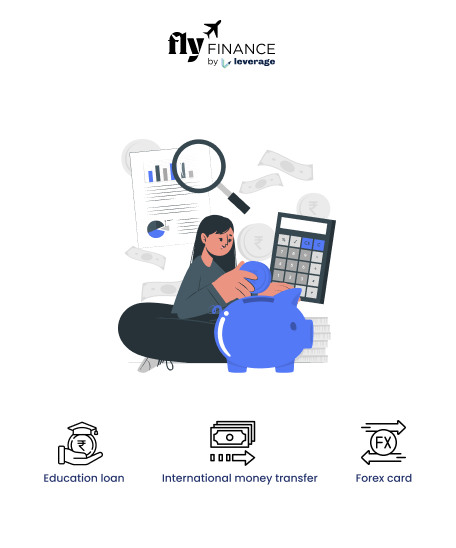Have you recently transferred funds abroad and are worried about the remittance status? It’s a common concern, especially when sending tuition fees or funds for medical purposes. While most transfers are processed quickly, delays can sometimes occur. The bank’s online tracking system lets you check remittance status with Form A2 easily. You can understand the processing stage once you provide the relevant details. Let’s explore how to check remittance status with Form A2.
Table of contents
Check Remittance Status With Form A2
Form A2, mandated by the Reserve Bank of India (RBI), lets you make various foreign exchange transactions. These include transferring funds abroad for educational expenses, medical treatment, travel, and other permissible payments under the Foreign Exchange Management Act, FEMA. Transfers usually take 3 to 5 business days to process. However, you can always track international money transfers if funds haven’t reached the beneficiary.
You may contact the bank and the Authorised Dealer using the transaction reference number to check the remittance status. When you fill out Form A2 and submit it, the bank or the Authorised Dealer shares a ‘Reference Number’. This number is crucial for tracking your remittance throughout its processing stages.
- You can visit the dealer’s branch and share the ‘Reference Number’ with them. Once shared, they will share real-time updates on the status of your remittance.
- Alternatively, you can use their online tracking platform on the dealer’s official website. Enter the reference number and see it yourself. Look for a section dedicated to international transfers or remittances.
Also Read: Check here some of the most important terms related to international money transfer.
Remittance Status Online
As discussed, you can easily check your remittance status online. Navigate to the ‘Remit Funds’ section, provide the reference number on their online tracking system and submit. The new page will show you the status of your transaction.
If you provide SWIFT details in Form A2, Indian Overseas Bank will share the remittance status through SMS services. Other banks like the Federal Bank require details like transaction date, name of exchange house, reference number and beneficiary account number to help you check the remittance status online.
Here are the online links to help you track international money transfers online-
| Track Remittance Online | Link |
| Canara Bank Remittance Tracker | Click Here |
| Axis Bank Remittance Tracker | Click Here |
| IOB Remittance Tracker | Click Here |
| Federal Bank Remittance Enquiry | Click Here |
| Western Union Remittance Tracker | Click Here |
Other Ways to Track Remittance With Form A2
If you are unable to find the remittance status online, you can always use other ways to track international remittances using Form A2. To track the status of your Form A2 application for remittance, follow these-
Customer Service
If you cannot find the information online, call or email the customer service department of your bank. Have all relevant details ready, including your transaction reference number and any personal identification details they might require.
Check with the Beneficiary
Contact the recipient of the funds to confirm whether they have received the remittance. This can provide an additional layer of confirmation regarding the status of your transaction.
Also Read: Check out this blog to make the cheapest international money transfers abroad.
Common Reasons for Delay in Remittance
International wire transfers can experience delays for several reasons, which can affect how quickly the funds reach the recipient. If you are wondering what’s taking too long to turn the ‘Under Process’ remittance status to ‘Received’, here are probable reasons-
- Bank Holidays: Transfers can be significantly delayed due to bank holidays in either the sending or receiving country. If a bank is closed, it cannot process transactions until it reopens, which can extend the transfer time considerably, especially around major holidays.
- Know Your Customer (KYC) Regulations: Banks must comply with stringent KYC and anti-fraud regulations, which can lead to additional checks on international transfers. If a transaction raises any red flags, it may undergo further scrutiny, causing delays in processing.
- Incorrect Instructions: Any errors in the transfer instructions, such as incorrect account numbers or routing details, can result in delays or even misdirected funds. It’s essential to double-check all information before submitting the transfer request.
- Intermediary Banks: Many international transfers go through one or more intermediary banks before reaching the final destination. Each intermediary may add additional processing time, especially if they have their own cut-off times or operational hours
This was all about remittance tracking online and offline. If you’ve waited a few days and still haven’t received confirmation, it’s best to follow up with both banks. By taking proactive steps to track your transfer, you can minimize any stress and ensure that your funds reach their destination promptly.
To learn more about forex, education loans, the best bank accounts for students, and banking experience for global students or international money transfers, reach out to our experts at 1800572126 to help ease your experience with studying abroad.
FAQs
To check your international remittance status, contact your bank or use their online banking portal. Provide your transaction reference number for accurate tracking.
You can track your money transfer using Form A2 by contacting the Authorized Dealer where you submitted the form. Use the transaction reference number to get updates on your remittance status.
A remittance tracking number is a unique identifier assigned to your money transfer. It allows you to track the status of your transaction through your bank or financial institution.
To check the remittance status, you typically need the transaction reference number, the sender’s and recipient’s names, and the date of the transfer. Providing these details helps banks give accurate updates.
Delays in remittances can occur due to bank holidays, incorrect instructions, or compliance checks. Additionally, processing times can vary based on the banking infrastructure in the recipient’s country.
Follow Us on Social Media





























